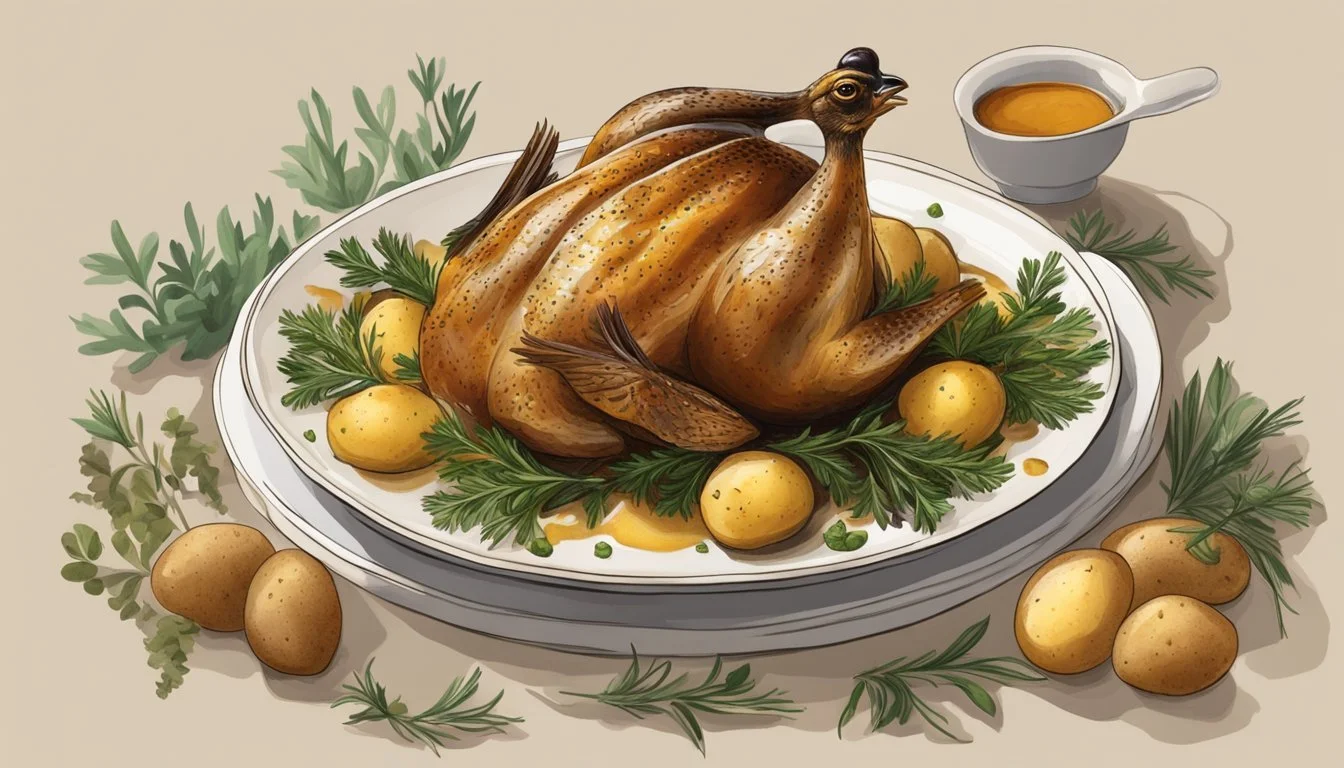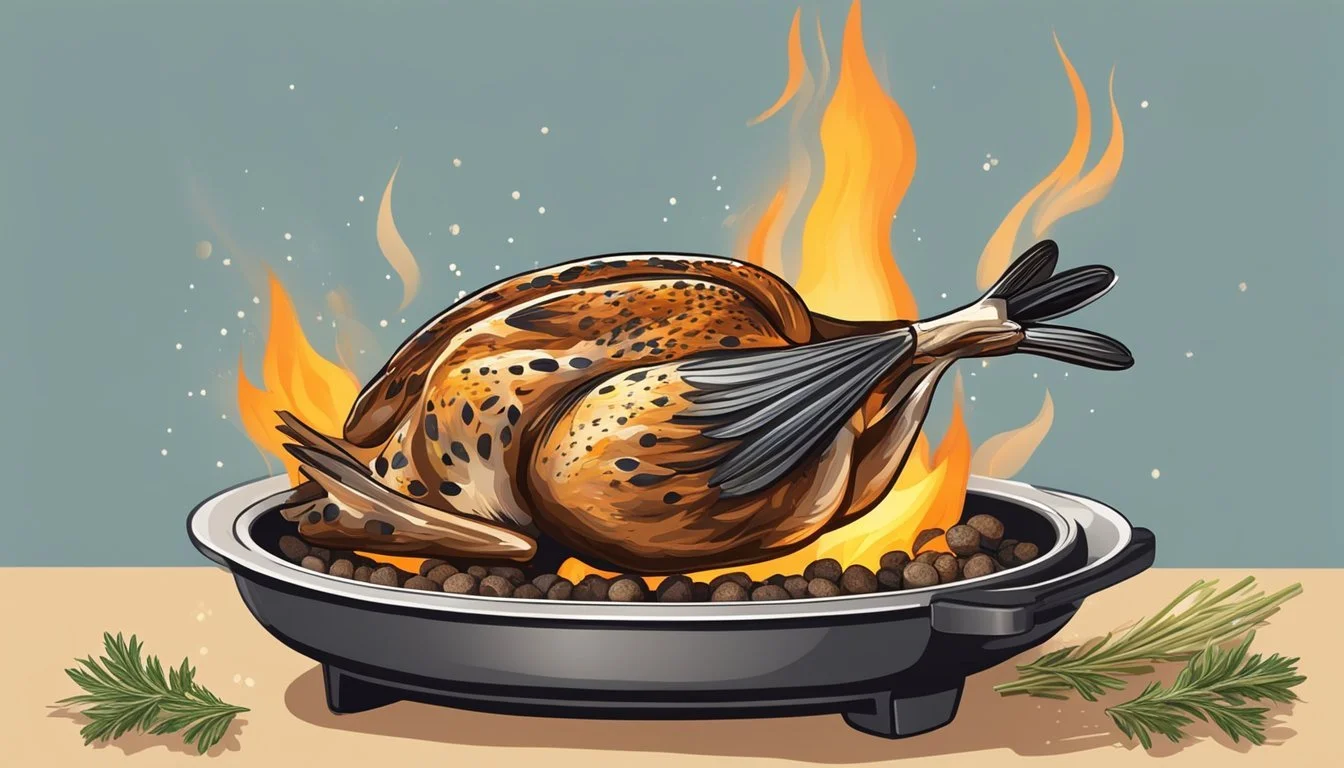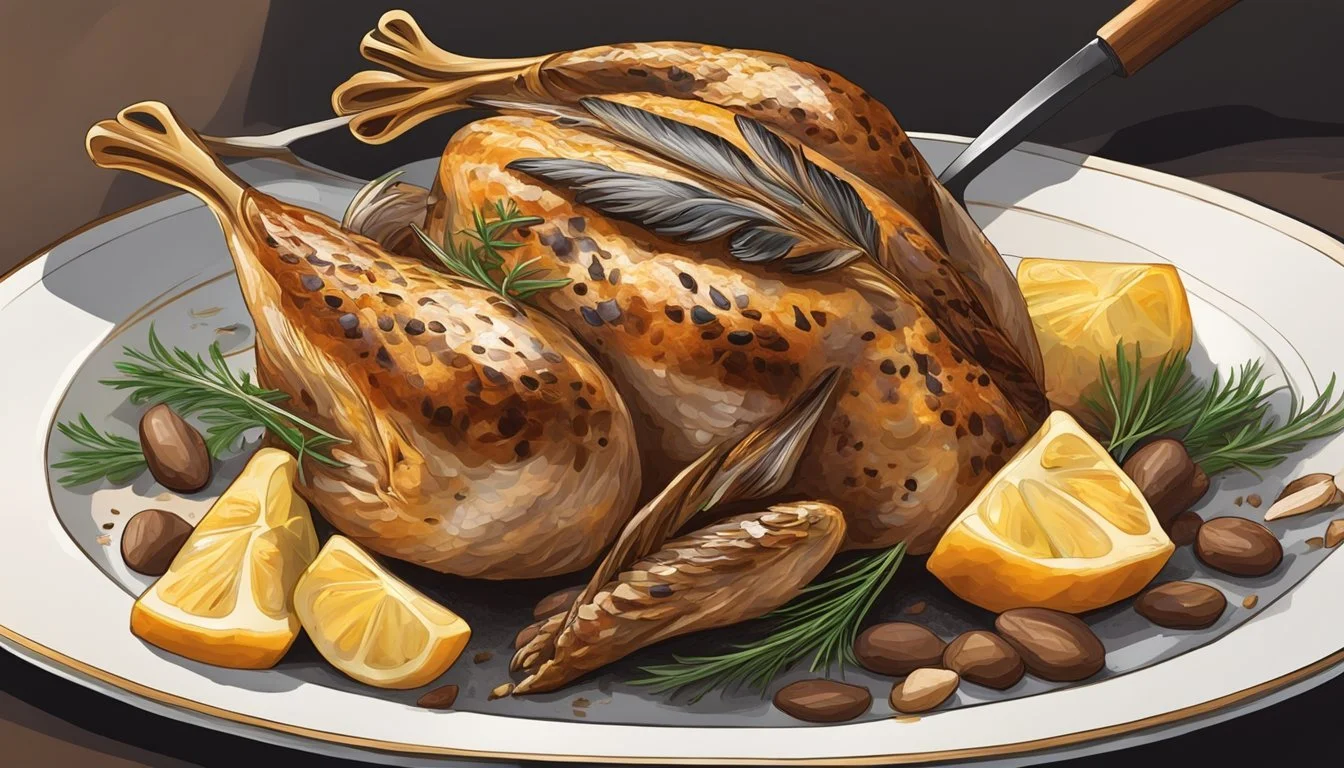How Do You Eat a Roasted Quail
Expert Tips for Savoring This Delicacy
Quail (What wine goes well with quail?), a small game bird known for its delicate flavor and tender meat, makes for an exquisite dining experience when roasted. With its size smaller than a chicken but larger than a partridge, quail offers a unique option for those interested in exploring the subtleties of game birds. Roasting quail in an oven accentuates its natural flavors and ensures a succulent, crispy-skinned dish that is both traditional and versatile in its preparation.
Preparing oven-roasted quail involves meticulous seasoning and careful attention to cooking times to preserve the bird's moistness. The process typically begins with marinating or brining, which helps to infuse the quail with flavors and enhance its juiciness. In the roasting stage, the quail is often arranged on a baking tray or skillet, sometimes propped up to ensure even cooking. Roasting typically takes place at high temperatures, which crisps the skin while keeping the interior meat tender.
Consuming roast quail can be slightly different from larger poultry due to its petite size and structure. When served as an individual portion, a whole quail is often presented on the plate, allowing diners to savor the complexity of its flavor profile that ranges from mildly gamey to slightly nutty, depending on the species and diet of the bird. Eating roast quail requires some dexterity, as one navigates the smaller bones and enjoys the distinct taste that sets it apart from more common poultry. The experience of dining on roasted quail is a thoughtful journey through the traditions and flavors cherished in the world of wild game cooking.
Preparing the Quail
Preparing quail involves careful selection, thorough cleaning, and a flavorful marinade to ensure the best roasted result. Each step is essential to enhance the delicate taste and ensure the bird is oven-ready.
Selecting the Right Quail
When choosing quail, seek out plump, well-dressed birds with smooth, unblemished skin. Size is an indicator of quality, with larger birds typically offering more meat. Frozen quail should be devoid of freezer burn. Freshness is key, so always check the packaging date when possible.
Cleaning and Trussing
Prior to cooking, quail must be cleaned thoroughly under cold water and patted dry. To truss the quail, tie the legs together using kitchen twine and tuck the wing tips under the body. This step helps the bird maintain a good shape and cook evenly.
Seasoning and Marinating
Marinating the quail can greatly enhance its flavor. A simple marinade might include extra virgin olive oil, minced garlic, kosher salt, and black pepper. For added zest, a touch of lemon juice can be incorporated. Rub the marinade over the quail and let it sit in the refrigerator, covered, for at least two hours to allow the flavors to permeate.
Ingredient Measurement Purpose Extra virgin olive oil 1/2 tablespoon Base for marinade Garlic 2 cloves, minced Add depth of flavor Kosher salt 1 teaspoon Enhance taste Black pepper 1/2 teaspoon Seasoning Lemon juice 1 tablespoon Brighten flavor
Ensure that the quail is left at room temperature for around 20 minutes before roasting to promote even cooking.
Cooking Techniques
The proper technique makes all the difference when cooking quail. Whether using an oven or stovetop, ensure to cook the bird thoroughly while retaining its moisture and flavor.
Roasting in the Oven
When roasting quail in the oven, one needs a roasting pan suitable for the bird's small size. Preheat the oven to around 400 degrees Fahrenheit for optimal roasting temperature. A typical cook time for quail is 15 to 25 minutes, depending on the oven and the size of the birds. One can baste the quail with a mixture of lemon juice or white wine to add flavor and encourage a golden-brown finish.
Cooking on the Stovetop
To cook quail on the stovetop, one should use a skillet—ideally a cast iron skillet—over medium to high heat. It's important to cook the birds in a preheated pan to achieve a seared and crispy exterior. Add a celery stick or other aromatics to the pan, along with a splash of chicken stock, to enhance the flavor and maintain moisture.
Finishing with High Heat
For a final touch of perfection, quail can be finished with a blast of high heat. This method can be applied either in an oven or over a stovetop to ensure the skin turns crisp while sealing in the juices. It's a quick process, so one needs to watch the quail carefully to prevent overcooking and ensure it maintains its delectable tenderness.
Serving and Presentation
Roasted quail, with its delicate flesh and crispy skin, is a culinary delight that requires careful serving and presentation to enhance the dining experience. Proper resting and carving techniques are essential, garnishes should complement the bird's natural flavors, and side dish pairings can turn this elegant entrée into a complete and satisfying meal.
Resting and Carving
After removing the oven-roasted quail from the oven, it is crucial to let them rest under tin foil for approximately 5 to 10 minutes. This allows the juices to redistribute throughout the bird, ensuring that the breast meat remains succulent. To carve, one should use a sharp knife to gently separate the breast from the body, followed by the legs, being mindful of the small size of the bird.
Garnishing
A sprig of rosemary or a pinch of lemon zest can be used to enhance the roasted quail's flavor and visual appeal. A light drizzle of balsamic vinegar can add a pleasant acidity that complements the richness of the bird. A presentation utilizing natural and fresh ingredients echoes the quail's gamey heritage.
Pairing with Sides
Oven-roasted quail is typically served as a starter but can be accompanied by a variety of sides to transform it into a main dish. A classic side could be roasted vegetables, which can be cooked in the same pan to absorb the flavors of the quail. Small, light salads dressed with orange juice or vinaigrettes work well to balance the meal. Here is a simple pairing suggestion:
Vegetables: Roasted root vegetables with rosemary
Salad: Arugula and citrus salad with a balsamic dressing
Starch: Garlic and thyme-infused rice or creamy polenta
Including a selection of sides that complement the small bird will result in a harmonious dish that satisfies both the palate and the eyes.
Additional Tips and Considerations
When roasting quail, achieving a balance between a flavorful, crispy skin and succulent meat is crucial. This section clarifies important facets of quail roasting to enhance your dining experience.
Avoiding Common Mistakes
One common mistake is neglecting to season the bird adequately. Quail tastes best when infused with flavors from herbs such as thyme and sage or from olive oil (EVOO), which also aids in crisping the skin. Another mistake is skipping the pre-roasting preparations such as bringing the quail to room temperature, patting dry to remove excess moisture, and using a cooking spray or brush to apply EVOO evenly. This helps prevent the skin from drying out or the meat from getting overcooked.
Adjusting for Quail Size and Oven Variability
Quail are smaller than other poultry, so it's essential to adjust cooking times accordingly. The breast meat should reach an internal temperature of 165°F (74°C) to ensure doneness without overcooking. Ovens vary, so it's best to use a meat thermometer to check. Also, consider the position of the quail in the oven; placing them too close to the heat source can cause uneven cooking, with legs and wings prone to burning before the rest of the bird is cooked through.
Health and Nutrition Information
Quail meat is a lean, nutritious option. A serving of quail provides high-quality protein while being relatively low in calories and fat. For health-conscious consumers or those who enjoy wild game, quail is an excellent choice, especially when roasted without the use of excessive oil or butter. A light coat of EVOO and the use of natural herbs can enhance flavor while keeping the meal wholesome. Remember that sauces, while optional, will alter the nutrition facts of the dish, so use a wild game sauce sparingly if desired.
By taking these tips and considerations into account, diners and cooks can enjoy perfectly roasted quail that is both delicious and nutritious.
Additional Resources
To enhance one's culinary skills and enjoyment of roasted quail, a selection of curated resources is invaluable. These resources provide enthusiasts with access to refined recipes, engaging communities, and the latest updates in the world of cooking quail.
Recommended Recipes
For those seeking to prepare quail in a gourmet style, the following recipes are highly recommended:
Roasted Herb Quail: Infused with a blend of fresh herbs like thyme and sage, this recipe offers a classic approach to bring out the succulence of quail.
Mediterranean-Inspired Quail: A recipe featuring a rich seasoning mix and a deglazing technique with white wine to unlock intense flavors.
Citrus Glazed Quail: Citrus elements combined with a sweet glaze create a balance of flavors that complement the quail's natural taste.
Each recipe has distinct steps and ingredients to ensure cooks can replicate the delicious outcome.
Joining a Cooking Community
Participation in cooking communities can enhance one's cooking experience by fostering the exchange of quail recipes and cooking tips.
Online Forums: Cooks can find a plethora of quail enthusiasts sharing insights and personal interpretations of quail recipes.
Social Media Groups: Platforms such as Instagram cater to food aficionados, offering a visual feast of quail preparations and the chance to interact with seasoned cooks.
Communities are a supportive space for making inquiries, receiving feedback, and staying motivated.
Signing Up for Newsletters
To stay informed about the latest quail recipes and culinary techniques, subscribing to newsletters is highly beneficial:
Gourmet Newsletters: They often feature chef-curated quail recipes and advanced techniques such as how to properly deglaze a pan for optimal flavor.
Seasonal Cooking Guides: These newsletters can provide timely tips and recipes optimized for seasonal produce and holidays.
By subscribing, individuals ensure a regular stream of inspiration and knowledge right to their inbox.







